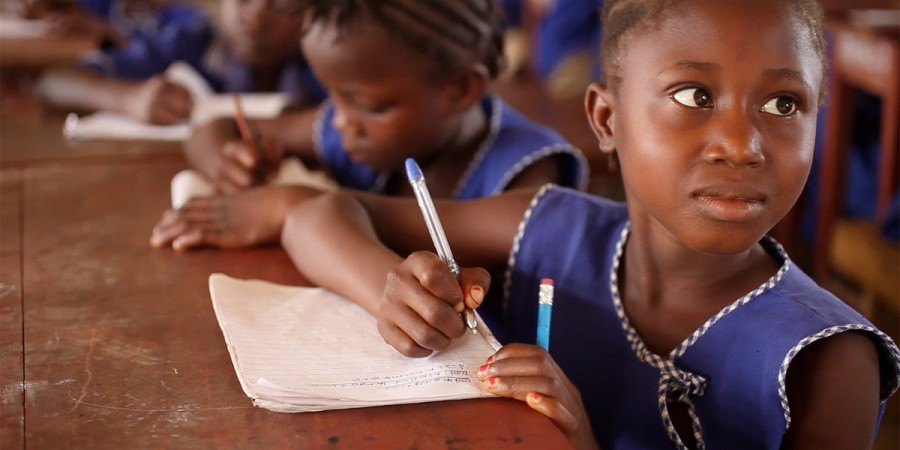In 2014, Sierra Leone had just begun to rebuild an education system ravaged by 10 years of fierce civil war when the Ebola epidemic hit the country with widespread illness and death. To stop the disease’s advance, authorities embarked on drastic, but medically necessary measures, including shutting down all schools for several months, putting the education of Sierra Leone’s children on hold once again.
They were among the millions of children in numerous countries around the world trapped in the disruption or chaos of humanitarian crisis and losing valuable, unrecoverable learning time. When you consider that, on average, conflicts in low-income countries last about 12 years and displacement due to conflict or protracted crises lasts an average of 17 years, it becomes evident that such situations can completely destroy the one opportunity for a basic education for millions of children. Their school years simply slip by with no chance to learn to read and write.
According to the Overseas Development Institute (ODI), an estimated 75 million children aged 3-18 are affected by emergencies and protracted crisis around the world. This means that they are at risk of having their education disrupted, being displaced, dropping out or receiving poor quality education – along with other psychosocial and safety concerns. There are also 17 million school-age refugee children and internally displaced who face particular challenges often losing out on their education. To make matters worse, humanitarian responses too often treat education much less urgently than they do other essential human services. Indeed, less than 2% of all humanitarian aid goes to education.
That’s why a new education crisis fund, aptly named Education Cannot Wait, will launch officially at the first-ever World Humanitarian Summit in Istanbul this month. It’s imperative that we move ahead quickly – yet, carefully – with this new initiative to create a strong and sustainable vehicle that can quickly mobilize the resources necessary to keep millions of children learning at their most vulnerable moment.
The new Education Cannot Wait fund will build on one of the Global Partnership for Education’s priority functions – ensuring that all children, including those living in conflict and crisis receive a quality education. Fragility and conflict are among the leading barriers preventing children from getting into school and staying there. GPE developing country partners are home to about 65% of the world’s refugee children, and 28 of GPE’s 65 developing country partners are considered fragile or conflict-affected.
Over the past 16 years , GPE has disbursed more than $1 billion in grants to fragile and conflict-affected countries, and its funding for countries in crisis has grown steadily from 21% of overall GPE funding in 2008 to about 50% in 2015.
And GPE’s interventions work: conflict-affected country partners that received GPE funding showed an increase in primary school completion rates from 55% in 2000 to 68% in 2013. But that’s not nearly enough. Looking ahead, the growing number of countries in crisis will require much more support and prioritization within humanitarian responses.
GPE also provides a foundation for coordination and policy dialogue that bridges the gap between humanitarian and development interventions in countries as disparate as Chad, Burundi, Central African Republic, South Sudan, Somalia and Yemen.
During times of crisis, GPE has helped countries prepare transitional sector plans that are the foundation for long-term education sector planning. It also brings together all development partners at country level to keep children learning in the event of emergencies and protracted crisis.
With an accelerated financing mechanism, GPE makes it possible for countries to use up to 20% of their existing GPE allocation to meet immediate crisis needs.
So when the Ebola crisis struck Sierra Leone, a GPE partner since 2007, the government was able to use a part of its existing US$17.9 million GPE grant for education to support emergency radio and television school programs when schools were closed. They also helped prepare schools to reopen, ensuring safe and secure learning environments. The country is still getting its children’s education back on the right track, but for too many the time lost will delay and further complicate their own personal progress.
Those children and millions of others like them, caught in calamities beyond their control, provide more than enough evidence that the world needs the new Education Cannot Wait platform and that we need it now. We urge the high level leaders attending the World Humanitarian Summit to put education at the top of their list of humanitarian response priorities and to support the new platform. .


Comments